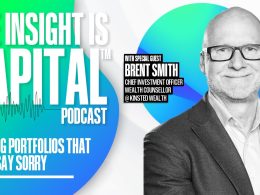by Brian S. Wesbury – Chief Economist & Robert Stein, CFA – Deputy Chief Economist, First Trust Portfolios
The lags between a shift in monetary policy and the economic impact are long and variable. While the actions of the Federal Reserve during the pandemic were unprecedented, it finally looks like the excess money pumped into the economy has worked its way through the system. And with the M2 measure of the money supply down from its peak, the economy is reacting.
This measure of the money supply surged in 2020-21 in the first two years of COVID as the government massively increased deficit spending and enacted temporary tax cuts that didn’t improve the long-term incentives to work, save, and invest. The resulting spike in inflation in 2021-22 certainly didn't surprise us, and it should not have surprised anyone else.
Yet it did. Many went out of their way to find other things to blame for inflation. They ignored M2, and blamed “Putin” or “supply chains” and called inflation “transitory.”
Sure, some prices were boosted by the lockdowns and war, but that was only a small fraction of the problem. If it was the whole problem or most of it, we wouldn’t be sitting here more than four years later with the consumer price index up 3.0% from a year ago. If it were all “transitory,” we should have seen a widespread drop in consumer prices, and that didn’t happen.
The Fed itself continues to ignore the money supply. Fed officials never bring up the topic on their own and reporters rarely if ever ask about it. And on the rare occasion when Fed Chairman Jerome Powell is asked about the money supply, he goes out of his way to say it’s not something the Fed pays much attention to.
However, the link between money and inflation is starting to get some more attention. A recent paper by Greg Mankiw, an academic economist who was the chairman of the Council of Economic Advisers under President George W. Bush, noted that forecasts of high inflation that were made back in 2021 that considered the M2 surge turned out to be right. (Note: the First Trust economics team won an award as the most accurate economists for the US economy for 2022, and we recognized the importance of the M2 surge.)
Which brings us to where the economy is right now. Consumer prices declined 0.1% in June, the largest drop for any month since the early days of COVID. Much of this was due to a drop in energy prices, but even “core” consumer prices were soft, up only 0.1% for the month, the smallest increase for any month in more than three years.
Meanwhile, we are seeing some softness in economic growth. Overall retail sales in May were no higher than in December (after adjusting for normal seasonal variation) and it looks like retail sales fell in June (to be reported Tuesday). Manufacturing production is likely lower than a year ago (reported Wednesday).
Considering that the M2 measure of money peaked roughly two years ago, this should not be surprising. The drop in M2 from early 2022 through late 2023 appears to be finally having an effect.
The wild card is that M2 is up at a modest 2.3% annual rate since last October. If this keeps up, a soft landing is possible while inflation continues to move back down to the Fed’s target. It could also leave room for some rate cuts by the Fed. By contrast, if the M2 money supply resumes a decline, that would raise the risk of a recession and if M2 surges again, it could herald a revival of inflation like we had in the 1970s.
Either way, we are glad the M2 money supply is starting to get more attention, we still follow it closely, and think investors should pay attention, as well.
Brian S. Wesbury – Chief Economist
Robert Stein, CFA – Deputy Chief Economist
Click here for a PDF version
Copyright © First Trust Portfolios














